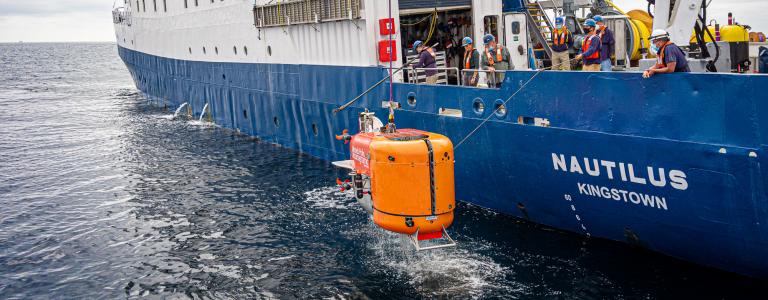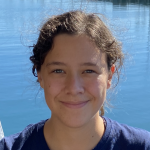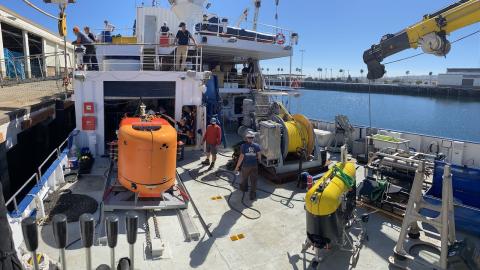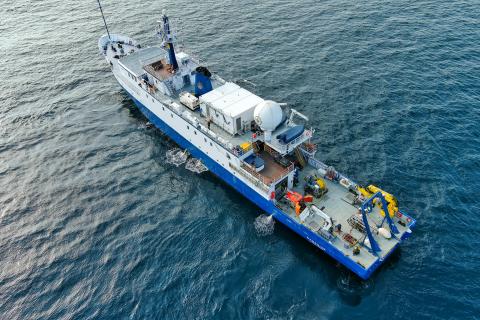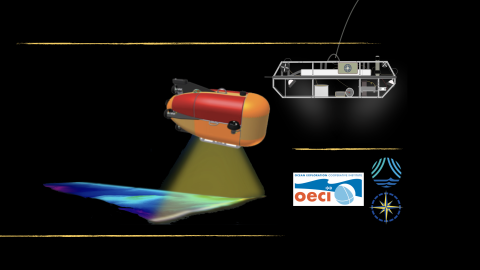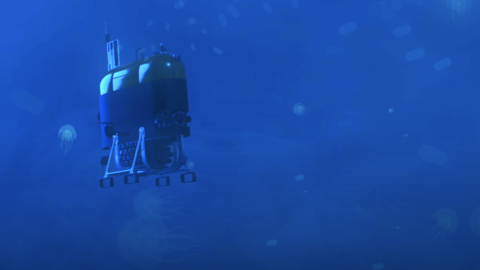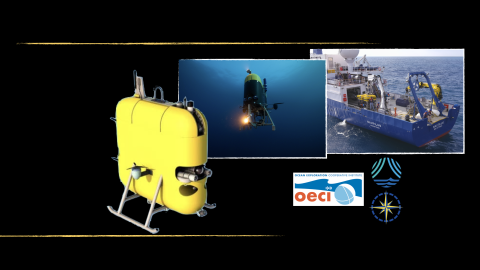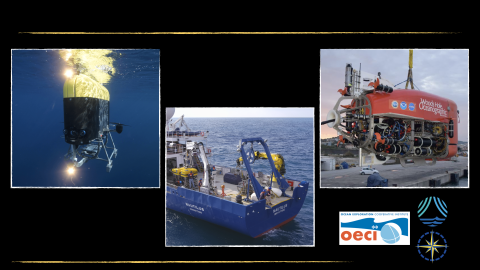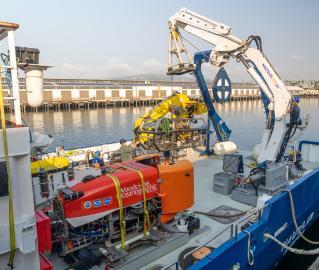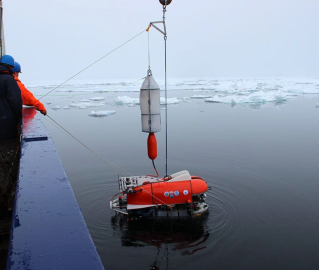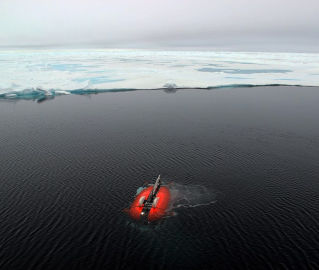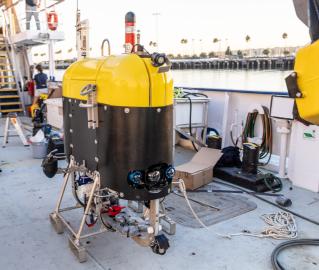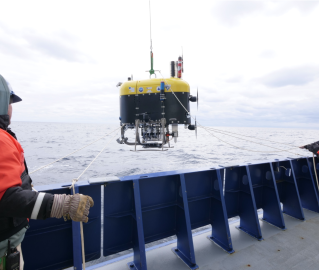This expedition aboard E/V Nautilus will support the testing of novel or emerging capabilities with two different autonomous underwater vehicles from Woods Hole Oceanographic Institution (WHOI). Funded by NOAA Ocean Exploration through the Ocean Exploration Cooperative Institute (OECI), one of the OECI’s goals is to build towards autonomous vehicles sharing information, allowing each vehicle to be more effective and to provide increased situational awareness to the vehicle operators aboard or ashore.
This expedition features technical testing with two WHOI autonomous vehicles that have been designed for unique underwater environments. The hybrid remotely-operated vehicle (HROV) Nereid Under Ice (NUI) was originally developed by engineers at WHOI to explore ice shelves and floating sea ice far from its support ship and to operate in multiple modes, from a remotely-operated vehicle tethered to a research vessel and as a fully autonomous vehicle. Designed for an entirely different environment, the HROV Mesobot was developed by WHOI to visually survey and sample the ocean twilight zone, or mesopelagic zone, without disrupting the environment in which it operates. Mesobot has an extended battery life allowing it to observe delicate animals for as long as 48 hours in this critically understudied habitat.
The expedition will take place in two areas of interest to the deep-sea science community off the coast of Southern California, seep sites in the Santa Monica Basin and the submerged shoreline surrounding Osborn Bank, in the traditional and modern lands and waters of the Tongva, Kizh, and Chumash peoples. These sites were selected for their compatibility with the goals of the cruise but also because Nautilus has conducted recent expeditions in this area and has baseline data that will allow a detailed comparison between old and new data sets.
This expedition is sponsored by NOAA Ocean Exploration through the Ocean Exploration Cooperative Institute (OECI). The NOAA OECI is a consortium of academic and non-academic partners including the University of Rhode Island, Woods Hole Oceanographic Institution, University of New Hampshire, University of Southern Mississippi, and Ocean Exploration Trust.
